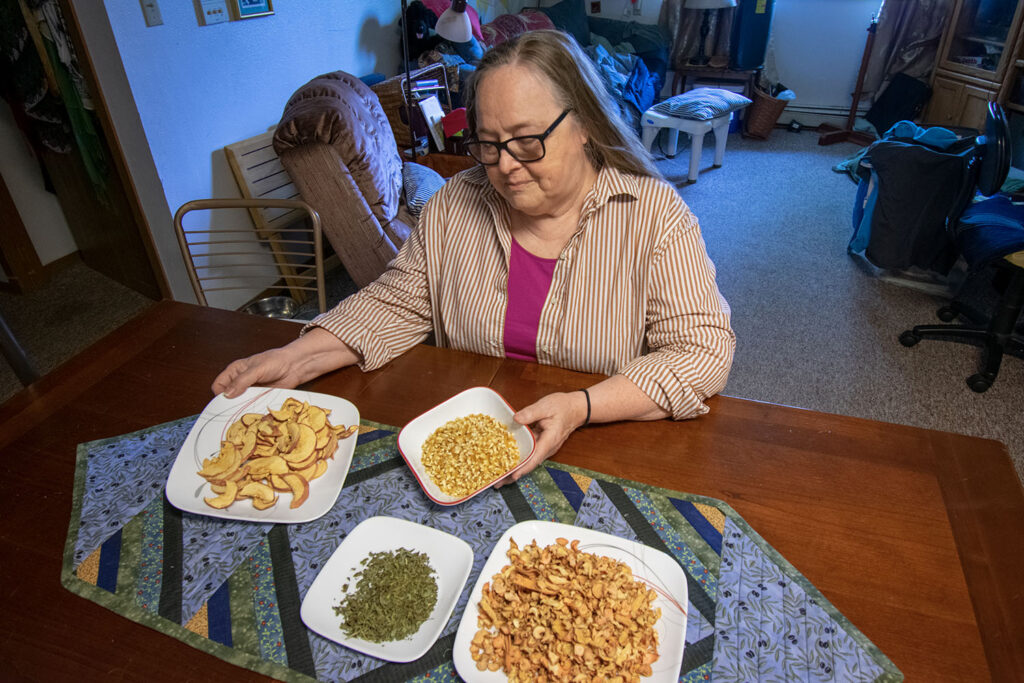- (800) 416-8102
- info@nativepartnership.org
- 16415 Addison Rd, Suite 200, Addison, TX 75001-3210
Investing in Your Community
Holly is passing on vital skills to increase food sovereignty and healthy nutrition on the Crow Creek Reservation. Living on the reservation often means food deserts and a lack of grocery stores, which is the case in Fort Thompson, South Dakota, where fresh fruits and vegetables are in limited supply. As a graduate of PWNA’s NPRA T3 training, Holly has honed her cooking skills for healthy ancestral diets and passes on that knowledge to her community.
Investing in Your Community
Holly is passing on vital skills to increase food sovereignty and healthy nutrition on the Crow Creek Reservation. In 2018, she graduated from Train-the-Trainer (T3) offered by Northern Plains Reservation Aid (NPRA), a program of Partnership With Native Americans (PWNA). T3 utilizes Native chefs to teach healthy cooking skills to professionals who prepare congregate meals and/or support community wellness. The training covers healthy ancestral diets, Native foodways and cultural knowledge of food as medicine.
Since graduating T3, Holly has passed on healthy cooking skills to other members of her community in Fort Thompson, South Dakota. While taking the training, she was working as a chef for the tribe’s Tokata Youth Center. “The T3 class was taught by Native Americans who gave me a clear picture of what a sovereign [Indigenous] diet should be. Once I learned that, I was in love with cooking their way. I use ingredients like buffalo, timpsila and wojapi.”
Some of her favorite recipes include squash soup, buffalo stew, and hominy dishes. “I learned different ways to cook that changed how I look at vegetables.”
Now as site manager of a housing assistance program, Holly shares her T3 knowledge with the residents. As more and more Elders pass, knowledge of Native ancestral diets and practices dwindles.

Living on a reservation often means food deserts and a lack of grocery stores, as is the case for Fort Thompson where fresh fruits and vegetables are in limited supply. This makes it incredibly important for Native communities to understand how to grow, harvest and preserve their own food. Holly keeps garden boxes outside her housing complex to teach residents how to grow vegetables and harvest them. They grow zucchini, onion, potatoes, carrots and basil. Residents share in the harvest and enjoy communal meals that incorporate the produce.
Once a year, Holly also cooks dinner at the community center with donated supplies. “People are excited to eat a meal made of their ancestral foods. One person said they haven’t tasted a meal like that since their grandma made it, so that’s encouraging,” Holly shared.
“I really appreciate [PWNA programs]. The classes are well-thought-out and professional, and they give excellent info to take home.” The classes also focus on which foods work well for diabetics, and that includes some of Holly’s residents. American Indian/Alaska Native adults are nearly three times more likely than non-Hispanic white adults to be diagnosed with diabetes. “Diabetes can really ruin lives,” Holly says.
“I’m not seeing any other groups doing what the [T3 program] does. It’s an investment in a community… I’m really grateful to be a partner.” You can invest in Native communities with a donation to NPRA.
